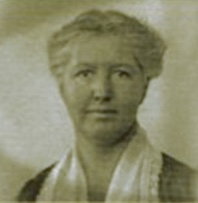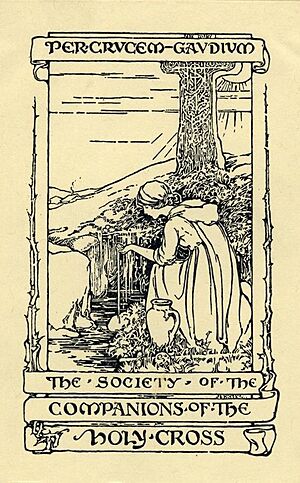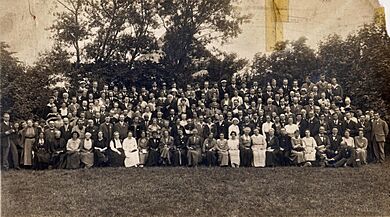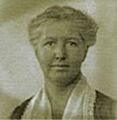Grace Hutchins facts for kids
Quick facts for kids
Grace Hutchins
|
|
|---|---|
 |
|
| Born | August 19, 1885 Boston, Massachusetts, US
|
| Died | July 15, 1969 (aged 83) New York City, New York, US
|
| Occupation |
|
| Organization |
|
Grace Hutchins (August 19, 1885 – July 15, 1969) was an American woman who worked to improve conditions for workers. She was also a journalist, a political activist, and a member of the Communist Party.
Grace spent many years writing about workers' rights and the economy. She was a dedicated member of the Communist Party her whole life. She worked closely with Anna Rochester, a close friend and fellow activist. Together, they promoted Christian pacifism in the United States. This means they believed in peaceful ways to solve problems, based on Christian beliefs. Grace also often took part in strikes and protests to support workers.
Contents
Early Life and Education
Grace Hutchins was born in Boston, Massachusetts, in 1885. Her family was well-off. She was the third of five children. Her father was a lawyer who helped start the Legal Aid Society. This group helps people who can't afford legal help. Her mother was involved with hospitals in the city. Both her parents were active in their church.
Grace studied at home with tutors. From 1898 to 1899, she traveled around the world with her parents. Later, she attended Bryn Mawr College, a women's college. She was very good at sports like basketball, field hockey, and tennis. She also supported women's right to vote. Grace graduated in 1907 and stayed in touch with her college friends.
Grace's Career
Teaching and Learning
A few years after college, Grace became a teacher for a church group in China. She taught at St. Hilda's school in South China starting in 1912. She later became the head teacher there. During her time in China, she wrote a diary. In it, she shared what she saw about the lives of Chinese women. She wrote about their education, health, and social conditions.
Grace became ill and returned to the United States in 1916. Her parents were also worried about her. Back home, she worked at a school that taught social skills.
Becoming an Activist
When World War I was happening, Grace was against the war. She started to believe in socialist ideas. When the U.S. joined the war in 1917, she took part in protests against it. Her strong views almost caused her to lose her job at the school.
In 1919, Grace met Anna Rochester in New York. Grace joined the Society of the Companions of the Holy Cross through her church work. Both Grace and Anna strongly believed in nonviolence. In 1920, Grace joined the Fellowship of Reconciliation (FOR). This group promoted peace in the United States. She became a secretary and speaker for the group. She also helped with their monthly magazine.
From 1920 to 1921, Grace studied issues affecting workers. She then went to Columbia University for two years. During this time, she worked in a cigar factory for ten hours a day. This helped her understand the tough working conditions many women faced.
Grace and Anna Rochester traveled through Europe together in the early 1920s. They even went as far as India and the Far East. They met other social reformers and visited factories. They were shocked by the poor working conditions they saw. They wrote to American newspapers about these problems.
By 1927, Grace worked for the Federated Press. Around this time, she and Anna also visited the Soviet Union. Grace was impressed by how people there were trying to overcome difficulties through their shared system. This was very different from the poverty she saw in India.
Their views on the Soviet Union did not match those of the FOR. So, when they returned to the U.S. in 1927, they left the FOR. Instead, they joined the Communist Party. During this time, Grace also saw textile workers go on strike in New Jersey and Massachusetts.
In 1927, Grace worked as a researcher for the New York State Department of Labor. She had to leave this job after five months due to her health. Later that year, Grace, Anna Rochester, and Robert W. Dunn started the Labor Research Association (LRA). This group collected facts and reports for trade unions and writers. Grace stayed with the LRA until 1967. She was once arrested for protesting the executions of Nicola Sacco and Bartolomeo Vanzetti in Boston.
Grace was a treasurer for the Communist Party's fundraising group. She ran for state offices several times, including for Lieutenant-Governor in 1948. However, she did not win any of these elections.
From 1940 to 1956, Grace owned shares in the communist newspaper Daily Worker. She also helped manage a fund that supported people facing legal challenges related to their political beliefs. She personally paid $10,000 to help Elizabeth Gurley Flynn get out on bail in 1951.
In 1948, during a famous trial involving Alger Hiss, a man named Whittaker Chambers accused Grace of threatening him. He said she threatened him after he left the Communist Party. Grace denied these accusations in interviews and writings.
In 1951, Grace had to speak before a government committee. This was because she wrote for Communist publications like The New Masses and Daily Worker. She believed that Marxism helped explain why women workers were treated unfairly.
Personal Life
Grace Hutchins had a very close relationship with Anna Rochester. Their friendship lasted for forty years. They lived together in Greenwich Village in New York City. In 1924, they moved into an apartment where they lived for the rest of their lives.
People described Grace as a warm person. She built strong connections with those around her. She believed in women's strengths and thought that women needed to be financially independent to be truly free.
Grace's father did not approve of her political activities. He was disappointed when she was arrested in 1927. However, he continued to give her money to live on. He also included her in his will when he died.
Anna Rochester passed away in 1966 at age 86. Grace Hutchins died in 1969 at age 83 at their home after a long illness.
Legacy
Julia M. Allen, who wrote about Grace, said that by the 1930s, Grace was one of the few women who still focused on women's rights. She helped keep the idea of feminism alive in the U.S. from the 1930s to the 1950s.
Grace's papers, along with Anna Rochester's, are kept at the University of Oregon. Allen believes that Grace and Anna wanted big changes, not just small improvements. This is why they often moved between different organizations. It is thought that their shared work and political goals brought them together.
Writings
Grace Hutchins's writings mainly focused on working conditions for women and children. She helped edit several reference books and also edited a magazine called Railroad Notes from 1937 to 1962.
- Books
Grace Hutchins published three books:
- Jesus Christ and the World Today (1922), which she wrote with Anna Rochester.
- Labor and Silk (1929), which was about working conditions in textile factories. This book was based on her experiences during strikes in the 1920s.
- Women Who Work (1933), which was used by the Communist Party and U.S. unions. It was reprinted three times.
Images for kids
-
Great Hall of the M. Carey Thomas Library, Bryn Mawr College.
-
Society of the Companions of the Holy Cross, bookplate by Margaret Ely Webb
-
International Fellowship of Reconciliation conference, Nyborg, Denmark, 1923 (attendees pictured include: Oliver Dryer, Halvad Laange, Matilda Wrede, Helena Dudley, Grace Hutchins, Kirsten Svelmoe-Thomsen, Lilian Stevenson, Pierre Ceresole, Beatrice Haystead [Hoystead?], Friedrich Siegmund-Schultze, George Davies, Max Metzger, Leyton Richards, Alfred Peter, Anna Rochester, Ethel Stevenson)











